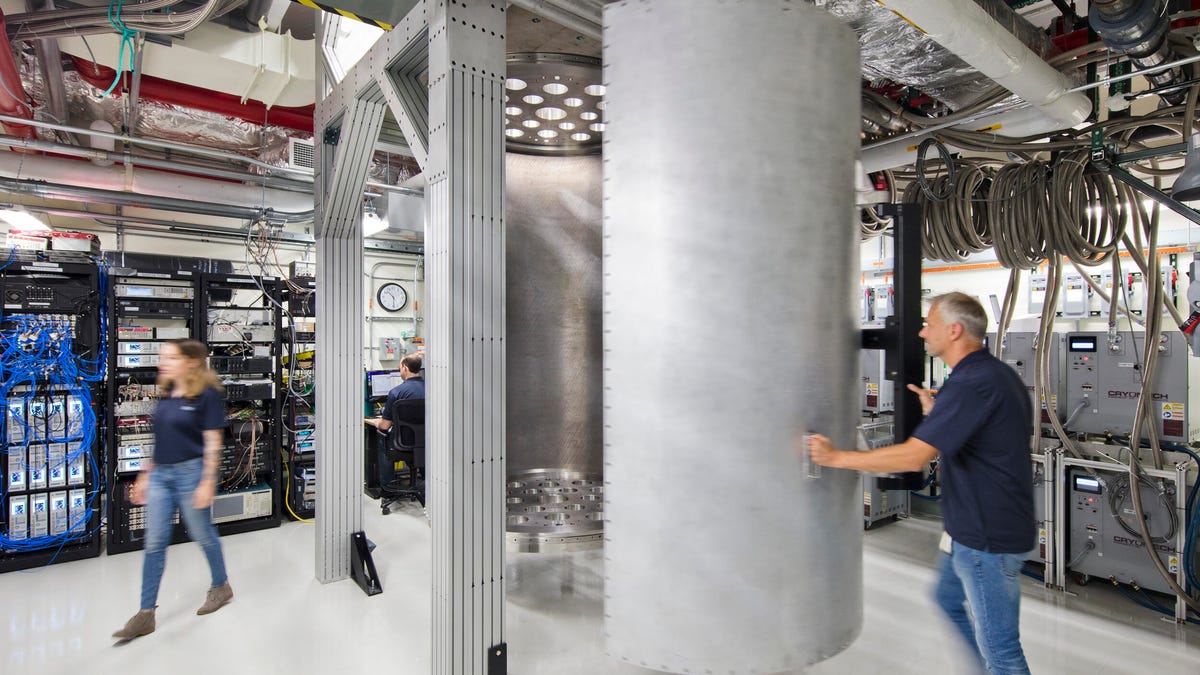IBM promises steady quantum computing progress through 2023
Big Blue's quantum computer will get more than 1,000 qubits in three years, and the company expects machines with more than a million qubits after that.

IBM expects to improve quantum computers in part by making them much larger. This more spacious refrigeration chamber will to house them.
Qubits, the fundamental data storage and processing elements in a quantum computer, are essential to making these revolutionary machines practical. Now IBM plans to pack a whole lot more into models coming this decade.
Big Blue plans for its Condor quantum processor, coming in 2023, to have 1,121 qubits, an enormous increase over the 27 and 53 qubits, respectively, in today's Falcon and Hummingbird chips. Further in future, the company plans to build systems with 1 million qubits or more, a profound change that IBM hopes will open up a new class of computing abilities.
The multiyear plans, which IBM unveiled at an event on Tuesday, signal confidence in a technology that is still in its infancy. Current quantum computing shows promise in tackling problems out of the reach of conventional computers. But success with more sophisticated machines, like the ones IBM plans, will open up possibilities such as designing new materials for solar panels or electric vehicle batteries, making package deliveries faster or investing money more profitably.
Having more qubits doesn't guarantee better performance, but it's an essential step. Qubits store a combination of one and zero instead of just one or the other like ordinary bits in conventional computers. That's one of the quantum physics properties that quantum computers exploit but that makes them difficult to operate and program.
IBM, which names its quantum chips after birds, is upgrading its current Hummingbird chip to 65 qubits this year. The Eagle chip will have 127 next year, and Osprey will have 433 the year after. That should help IBM fulfill its promise to double every year its quantum volume, a measurement that captures not just the qubit total but also how capable the qubits are at performing a computation.
These qubit numbers look weird compared to the binary numbers that characterize conventional computing. (Those numbers progress exponentially from 2, like a 64-bit chip or a 512GB SSD.) IBM's qubit totals are a byproduct of the geometric pattern that IBM uses to arrange its qubits into a two-dimensional lattice.
IBM's quantum computing roadmap
Other quantum computer makers include Google and startup Rigetti Computing, both of which take a similar approach to IBM's very cold superconducting qubits. Honeywell and startup IonQ, use a different approach trapping charged particles on their quantum chips. Honeywell expects to outpace IBM's quantum computing speed boosts by increasing quantum volume tenfold each year through 2025.
The best way to make a quantum computer still isn't clear. Intel and Microsoft use other approaches that are even more experimental than IBM's, but they hope they'll be able to leapfrog today's main players.

